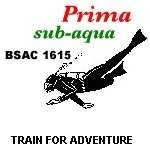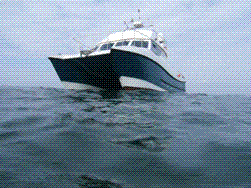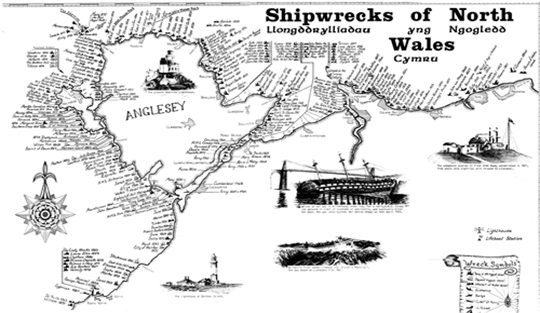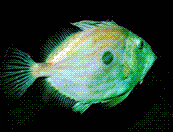
Issue 11 November 2007
Off-Gassing...
(Web Version)
Welcome to the eleventh issue of our newsletter
Welcome to new members Helen Hurst and Laura Richards who joined the club this month.
Profileó we need volunteers please, just a few words saying what made you take up this sport in the first place and why on earth you carry on!
Other notes:
Donít forget to get your glad rags out for the Dinner Dance December 1st. (Some of us are looking forward to the Brass Ass nominations more than others.)
The club secretary, Phillipa is recovering well from her recent car accident. No chance of getting through the next MOT though with a bent chassis, corroded bodywork & a sod to get started in the mornings, but enough about Phillipa. Unfortunately the car's a write off. Out of respect for a fellow committee member we ask that she is not referred to as Miss Whiplash.
The AGM is coming up also next month, Tuesday 4th December at the Woodman, 7.30 pm. Remember, this is your opportunity to voice your thoughts and vote for committee members.
Don't forget to vote for your favorite pics on the web photo competition.
10 litre Cylinder. In test
£50 contact: Richard Mace
0121 232 6007
If you have any items for sale please let us know.
The weekend at Eastbourne got off to a flying start with excellent accommodation and company, as usual. It then continued in what is now the expected state of affairs on our club diving trips, where everyone had a really good time, but the actual diving took second place. Loads of food, and obviously, loads of drink! (Paul actually shared his Southern Comfort). Al, having his time out, amused himself by prowling the countryside, rummaging in the hedgerows and generally conversing with nature . Luckily, there were no horses for him to frighten, but there were some of the ugliest sheep you have ever seen, liable to turn any Welshman to stone. On returning to the house, Al announced that he had found some sloes Ė we all know what that means Ė sloe gin! Yet more alcohol for the weekends. Excitement dimmed slightly when Wendy said they had to soak for 3 months. However, not to be put off by this, we still ventured out and picked 5 pound in weight (some of us still have the scars to prove it, and Iím sure Alís arms are a good 6 inches longer now).
The weekend at Eastbourne got off to a flying start with excellent accommodation and company, as usual. It then continued in what is now the expected state of affairs on our club diving trips, where everyone had a really good time, but the actual diving took second place. Loads of food, and obviously, loads of drink! (Paul actually shared his Southern Comfort). Al, having his time out, amused himself by prowling the countryside, rummaging in the hedgerows and generally conversing with nature . Luckily, there were no horses for him to frighten, but there were some of the ugliest sheep you have ever seen, liable to turn any Welshman to stone. On returning to the house, Al announced that he had found some sloes Ė we all know what that means Ė sloe gin! Yet more alcohol for the weekends. Excitement dimmed slightly when Wendy said they had to soak for 3 months. However, not to be put off by this, we still ventured out and picked 5 pound in weight (some of us still have the scars to prove it, and Iím sure Alís arms are a good 6 inches longer now).

The catamaran, the Sussex, and skipper, Mike, were great and to be recommended. We were well fed and watered throughout our weekend. The dives there have potential, but as so often happens on this part of the South coast, visibility was not as good as we had hoped for. We still managed to see that blue sky though and bikini tops were worn (pink not being your colour, Paul).
Shipwrecks of North Wales
Editors Corner
Thank you to everyone who has contributed to this months issue, and apologies for any mistakes but if you'd consumed as much alcohol as the Editor you'll understand.
Any further articles for next months edition would be appreciated, (any gossip, scandals, etc thatís printable) so let us know by 28th November.
If anyone would like to write a profile of their diving career, please let us know.
Hope you enjoyed this issue.
Ever wondered why so many ships sank around Wales in particular, or if anything was ever actually done to prevent it? This is the first instalment giving some explanation to these questions.

Traffic from Wales went to Ireland, other parts of Britain, and the continent. In medieval times, Beaumaris was the main port for Anglesey and Chester the chief port for England. Cargoes comprised wool, wine, and agricultural produce. Also, there were travelers, exploring other parts of the world and attempting to find ways of making money from it. Recorded shipwrecks date from medieval times, but of course, there was trade going on around Britain a thousand years before that. Many early shipwrecks around Welsh ports involved local ferries. In 1664, the Abermenai ferry sank near Newborough in Anglesey. The ferry had arrived safely from Caernarfon with 80 passengers on board. It drifted into deep water while the ferryman argued at the dock with a passenger about the penny fare. The drifting ship capsized. Seventy-nine passengers died. Thereís standing up for your rights, and sheer bloody-mindedness!
During the mid 18th and 19th century, improved technology meant that road traffic across bridges replaced ferry crossings. Iron steamers replaced wooden sailing ships, so youíd think there would be less wrecks, wouldn't you? Welsh cargoes of slate(!!!), lead, and coal were shipped all over the world. Liverpool was the main port for England, and built a transatlantic tradeómainly doing the triangle of Britain to Africa to the Americas and back with loads of dosh. Extreme weather conditions, heavy traffic, human error, and poor charts contributed to Walesís shipwrecks and disasters. Admiralty Charts testify to over 400 wrecks around North Wales. The transatlantic traffic to Liverpool passed close to the rocky shores of Anglesey and the Lleyn Peninsula and eventually, the canny Liverpudlians decided to do something about it. See next monthís issue.
Fish of the Month John Dory
The John Dory has a massive head with an extendable
mouth, and a rounded body shape when viewed from the side. The
transverse body section profile is however of a narrow keel form. The
dorsal fin has long anterior rays, which extend into 9 to 10 spines,
with spiny scales on their edges. This is in contrast to the shorter
branched rays of the posterior section. The anterior portion of the anal
fin also has rays, this time forming 4 spines with spiny scale edges. A
distinctive black spot is to be
 seen
on the body. This is set back, and slightly higher than the pectoral
fin, and is itself ringed by a narrow yellow halo. The pelvic fins are
greatly extended with their long rays. Colouration is a yellowish brown
to grey on the back with an almost metallic sheen, blending into the
silver grey sides. The membranes of the anal and pelvic fins tend to be
noticeable by their blackened appearance.
seen
on the body. This is set back, and slightly higher than the pectoral
fin, and is itself ringed by a narrow yellow halo. The pelvic fins are
greatly extended with their long rays. Colouration is a yellowish brown
to grey on the back with an almost metallic sheen, blending into the
silver grey sides. The membranes of the anal and pelvic fins tend to be
noticeable by their blackened appearance.
In the UK it is most likely to be encountered on the southern and western shores, but the John Dory does have a range spanning from Scotland down to the Canary Isles and Mediterranean.